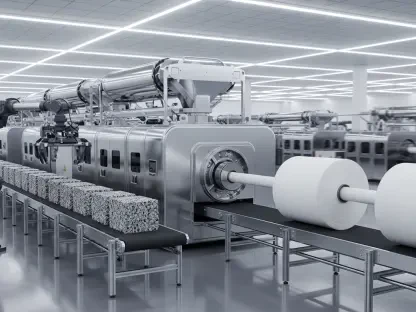Mining stocks hold a significant position in the industrial landscape as they decisively influence the availability and pricing of essential raw materials for the specialty chemicals and carbon black sectors. These materials serve as fundamental components in a multitude of applications, ranging from industrial to commercial uses. As technological advancements and consumer demands propel the need for more sophisticated products, the reliance on stable mining outputs becomes even more crucial. Such economic interdependencies highlight the complex global supply chains pivotal to these industries.
The Role of Mining Investments
Impact on Specialty Chemicals
Specialty chemicals play a pivotal role in enhancing product performance across various industries, from automotive to electronics. Their production hinges on the consistent availability of raw minerals, which are influenced directly by mining investments. When mining companies scale back operations or face regulatory hurdles, the rippling effect on specialty chemical production is considerable. This dependency underscores the importance of capital flow towards mining initiatives, as it promises consistency in raw material supply chains and prevents potential disruptions in availability.
Even small fluctuations in mining stocks can have significant repercussions on the specialty chemicals market. Rising mining costs or adverse regulatory changes can cause raw material shortages, ultimately leading to price escalations. In such scenarios, manufacturers face increased production expenses, which could dampen their competitive edge in global markets. Therefore, monitoring mining investment trends and adapting business strategies to accommodate potential shifts in raw material availability become essential tasks for stakeholders in the specialty chemicals sector.
Influence on Regulatory Frameworks
Mining stocks are not only affected by their intrinsic value but also by the regulatory frameworks governing mining activities around the world. Governments are increasingly prioritizing sustainable practices, which has led to stricter enforcement of environmental regulations. These changes necessitate a reevaluation of mining strategies to comply with new standards, often requiring further investments. Consequently, specialty chemicals producers depend on a well-regulated and sustainable supply of minerals, compelling them to engage closely with mining stakeholders to ensure compliance and stability.
Regulatory challenges drive innovation within the mining sector, fostering the development of sustainable practices that align with global expectations. This symbiotic relationship benefits the specialty chemicals industry by ensuring a steady influx of essential materials while supporting environmentally responsible mining. This evolving dynamic indicates that both sectors must work collaboratively to navigate new legislative landscapes, finding common ground to adhere to regulations while maintaining economic viability.
Demand and Growth in the Carbon Black Sector
Expanding Applications in Automotive and Tire Manufacturing
The carbon black industry has seen considerable growth driven by its applications in sectors such as automotive and tire manufacturing. As vehicle production ramps up with advancements in electric and hybrid technology, the demand for high-quality carbon black has surged. This material is indispensable for enhancing strength and durability in tires and various automotive components. Consequently, manufacturers are closely monitoring mining trends to ensure a consistent supply of the necessary carbon materials.
The demand boom in the automotive sector also reflects a broader trend towards sustainable materials, further pushing the carbon black market forward. Innovations in production processes and the integration of eco-friendly materials complement the industry’s expansion. However, challenges related to mining investments and the availability of raw carbon materials remain significant. Industry participants must be agile in adapting to these fluctuations, securing reliable sources to support sustained growth in automotive applications.
Strategic Implications and Future Considerations
Looking towards the future, the industry’s reliance on mining outputs is expected to intensify, necessitating strategic realignments to secure raw material sources. As technological innovations permeate automotive and tire manufacturing, a parallel focus on enhancing mining productivity will be crucial. This involves investment in efficient mining technologies and practices that minimize environmental impact, potentially reducing regulatory pressures while bolstering sustainable growth.
The interconnected nature of mining stocks and carbon black implies that industry players must be proactive in engaging in partnerships and collaborations across the supply chain. By aligning interests and developing resilient strategies, both sectors can anticipate market fluctuations and mitigate associated risks. This becomes particularly important as consumer expectations evolve and emerging technologies drive future growth trajectories.
Connecting Mining Strategies with Industrial Needs
Mining stocks play a critical role in the industrial sector because they significantly influence both the availability and cost of crucial raw materials for the specialty chemicals and carbon black industries. These industries rely on these raw materials as key components in a range of applications that span both industrial and commercial areas. As technology advances and consumer expectations rise, the demand for more advanced products increases, making a reliable mining output even more essential. This interdependence underscores the intricate global supply chains that are vital to these sectors. A stable supply of raw materials is necessary for creating innovative products that meet evolving market demands. Furthermore, any disruption in these mining outputs can have a ripple effect, affecting production schedules, pricing, and overall market stability. Therefore, understanding the importance of mining stocks in this dynamic economic landscape is crucial. They not only provide a steady flow of resources that maintain the balance but also support the growth and evolution of industries.









